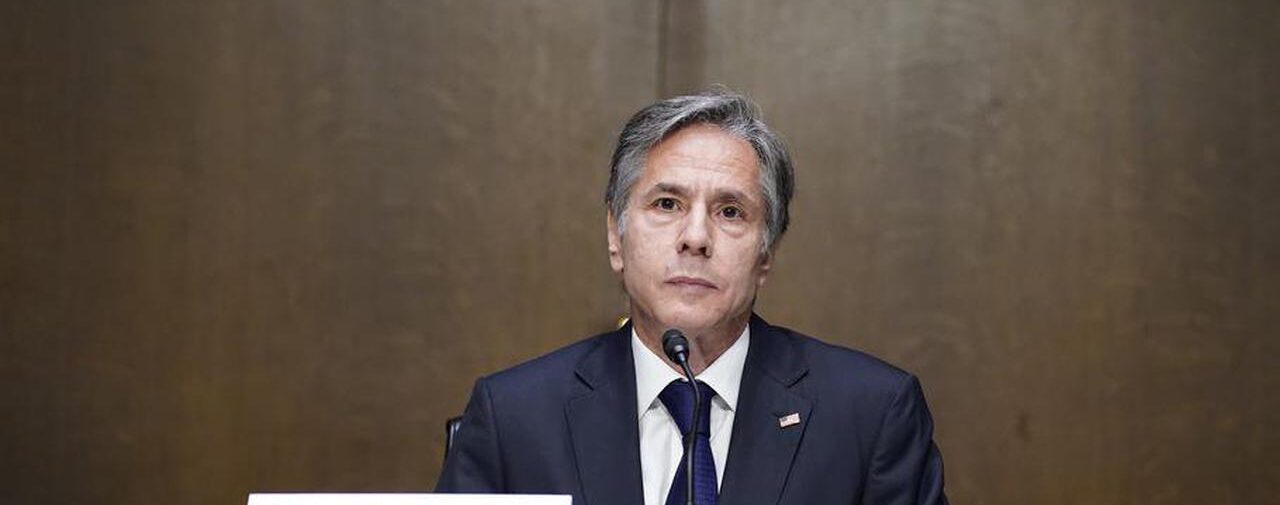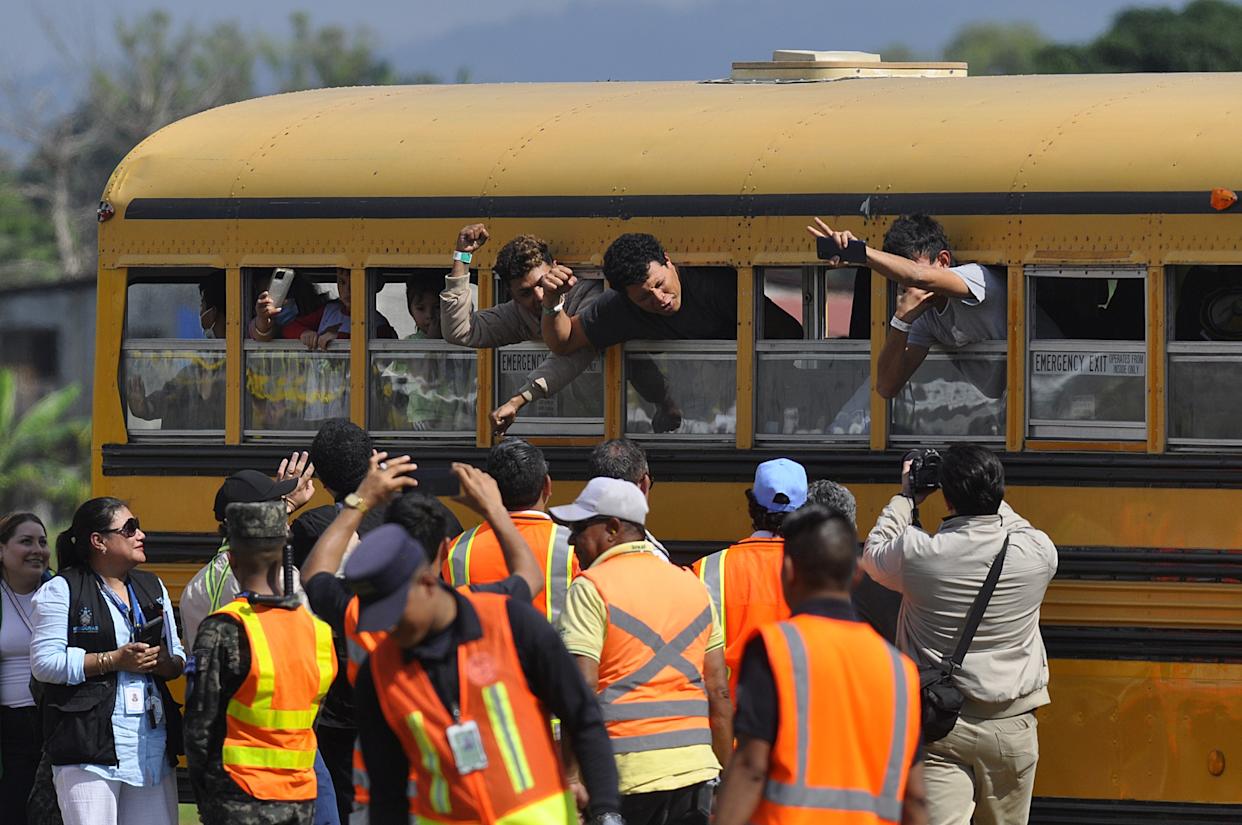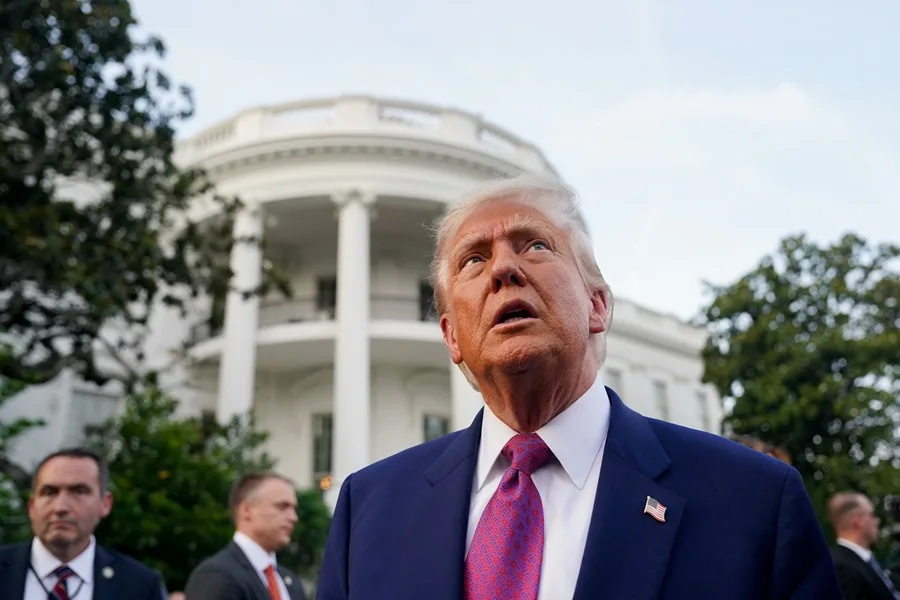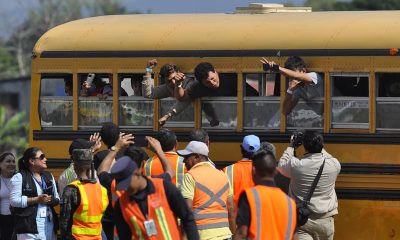International
US, Mexico seek to revamp fight against drug cartels

AFP
The United States and Mexico on Friday vowed to overhaul their joint fight against drug cartels, during a visit by a high-level delegation including US Secretary of State Antony Blinken.
President Andres Manuel Lopez Obrador has said Mexico no longer wants helicopter gunships and other weapons to combat drug traffickers, urging the United States to invest in regional economic development instead.
On his first visit to Mexico as the top US diplomat, Blinken, accompanied by officials including US Homeland Security Secretary Alejandro Mayorkas, held a working breakfast with Lopez Obrador followed by the main security talks.
Lopez Obrador hailed a “new phase” in relations, reiterating an invitation to US President Joe Biden to visit Mexico.
Washington has indicated that it is ready to revamp a 13-year-old program called the Merida Initiative that provided US military firepower, technical support and security training.
“After 13 years of the Merida Initiative, it’s time for a comprehensive new approach to our security cooperation, one that will see us as equal partners in defining our shared priorities, tackle the root drivers of these challenges, like inequity, like corruption, and focus not only on strengthening law enforcement but also public health, the rule of law, inclusive economic opportunities,” Blinken said.
He said more needed to be done to disrupt arms trafficking, strengthen port and border security, dismantle the cartels’ financial systems, root out impunity, tackle human rights abuses and address public health issues such as addiction.
Mexican Foreign Minister Marcelo Ebrard said it was time to say “goodbye to the Merida Initiative, welcome to the Bicentennial Agreement” — a reference to the Latin American country’s recent 200th independence anniversary.
The United States has given Mexico about $3 billion since 2008 for law enforcement training and equipment such as Black Hawk helicopters.
Lopez Obrador argues that investing in development projects in the region would help counter not only drug trafficking but also migrant flows — another major challenge facing the two countries.
Underscoring the magnitude of the crisis, Mexican authorities said Friday they had detained 652 undocumented migrants, more than half of them children, traveling toward the US border in refrigerated truck containers.
– Merida Initiative ‘dead’ –
Mexico will use the talks to push for steps to speed up extraditions between the two countries and reduce the flow of arms from the United States, Foreign Minister Marcelo Ebrard said this week.
In August, Mexico filed an unprecedented lawsuit against major US gunmakers in a Boston court over illegal cross-border arms flows that it blames for fueling drug-related violence.
Mexico is plagued by cartel-related bloodshed that has seen more than 300,000 people murdered since the government deployed the military in the war on drugs in 2006.
Many experts believe the strategy of militarization has failed because it has resulted in the cartels being fragmented into smaller, more violent cells, while drugs continue to flood into the United States.
The new security framework will focus “not just on crime, but also on the underlying cause of crime,” a senior US administration official said.
“We’re going to be looking at ways we can increase joint efforts to decrease demand for narcotics,” he said.
The two countries would continue to pursue the cartels, including their laboratories and supply chains, the official said.
But the new strategy would put more emphasis on stopping flows of firearms and drug money from the United States to Mexico, in order to “deny revenue to these cartels,” he added.
Forging a new joint strategy will not be easy, said Michael Shifter, president of the US-based think-tank Inter-American Dialogue.
“The Merida Initiative is indeed dead,” he said.
“Mexico is expected to press for significant US assistance and investment in the southern part of the country, but with budget pressures and other priorities in Washington, US officials are unlikely to be receptive,” he said.
International
Meta Says Russia Seeks to Ban WhatsApp for Defending Secure Communication

U.S. tech giant Meta, the parent company of WhatsApp, said that Russia is seeking to ban the messaging app because it “challenges government attempts to violate people’s right to secure communication.”
Russian authorities have encouraged citizens to switch to state-backed applications, and in August they already blocked WhatsApp’s calling feature.
On Friday, the communications regulator Roskomnadzor claimed that the platform was being used to “organize and carry out terrorist acts in the country, recruit perpetrators, and facilitate fraud and other crimes.”
“If the messaging service does not comply with Russian law, it will be completely blocked,” the regulator warned.
WhatsApp remains one of Russia’s most widely used messaging services, alongside Telegram.
Moscow is pressuring both platforms to grant authorities access to user data upon request for investigations into fraud and activities the government labels as “terrorist.”
Human rights advocates fear the demand could be used to target critics of the Kremlin, President Vladimir Putin, or the war in Ukraine.
International
Archbishop Wenski criticizes Trump’s deportation policies, calls for stronger push for reform

The Archbishop of Miami, Thomas Wenski, has called for increased pressure on the U.S. Congress to advance comprehensive immigration reform and criticized President Donald Trump’s mass deportation policies, arguing that they “do nothing to help.”
“We need to apply more pressure on Congress so lawmakers can make the necessary changes. It is also important for the Administration to listen to our voice. We do not want to be anyone’s enemy—we are Americans,” Wenski said in an interview with EFE.
The religious leader, who heads one of the dioceses with the largest Latino and Haitian populations in the United States, issued a call to defend the rights of migrants. He also emphasized that the U.S. Conference of Catholic Bishops (USCCB) has maintained a strong and public stance in favor of migrants for decades.
International
Trump relaunches diplomatic push to finalize U.S.-Backed peace plan for Ukraine War

U.S. President Donald Trump announced on Tuesday that his diplomatic team will resume meetings with delegations from Russia and Ukraine in an effort to pressure both sides to accept the peace plan proposed by Washington to end the war in Ukraine.
As part of this new round of talks, U.S. Special Envoy Steve Witkoff will travel to Moscow to meet with Russian President Vladimir Putin. Meanwhile, Army Secretary Dan Driscoll will hold discussions with Ukrainian representatives to narrow differences on the remaining points of the agreement.
Trump also confirmed his intention to meet personally with Ukrainian President Volodymyr Zelensky and with Putin, though he emphasized that such meetings will only take place “when the agreement is fully finalized or in its final stage.”
The president claimed that his administration has made “tremendous progress” toward resolving the conflict and reiterated that the war “never would have started” if he had been in the White House at the onset of the crisis.
The U.S.-backed peace plan consists of 28 points and has been revised following feedback from both sides. According to Trump, only “a few points of disagreement” remain under active discussion.
One of the most controversial aspects of the proposal is the suggestion that Ukraine cede parts of the Donbas region to Russia and limit the size of its armed forces. Kyiv is working closely with Washington to soften these clauses in search of an arrangement that does not compromise its sovereignty or security.
With this diplomatic push, Trump aims to solidify his role as the main mediator in the conflict and steer the war toward a political resolution after years of devastation, humanitarian crisis, and rising global geopolitical tensions.
-

 Central America2 days ago
Central America2 days agoTrump Pardons Former Honduran President Hernández and Warns of Aid Cuts Ahead of Election
-

 Central America4 days ago
Central America4 days agoPanama reinforces security with new helicopters and Super Tucano Aircraft purchases
-

 Central America4 days ago
Central America4 days agoTrump urges hondurans to back conservative candidate Nasry Asfura in november elections
-

 International4 days ago
International4 days agoArchbishop Wenski criticizes Trump’s deportation policies, calls for stronger push for reform
-

 Central America1 day ago
Central America1 day agoHonduras’ China–Taiwan Future Hinges on Sunday’s Presidential Election
-

 Central America12 hours ago
Central America12 hours agoHonduras Extends Voting by One Hour Amid High Turnout, CNE Announces
-

 Central America4 days ago
Central America4 days agoWashington calls for oversight as Honduras faces allegations of electoral interference
-

 International2 days ago
International2 days agoMeta Says Russia Seeks to Ban WhatsApp for Defending Secure Communication






























